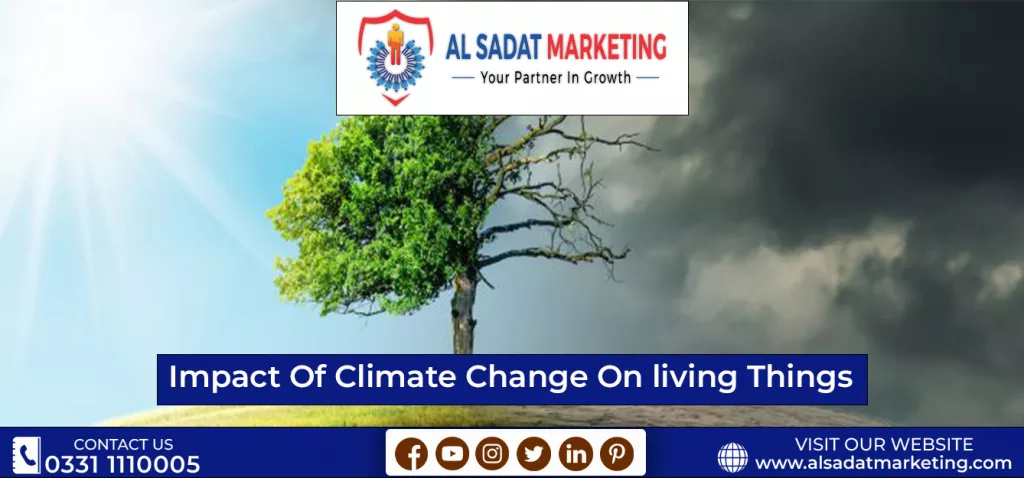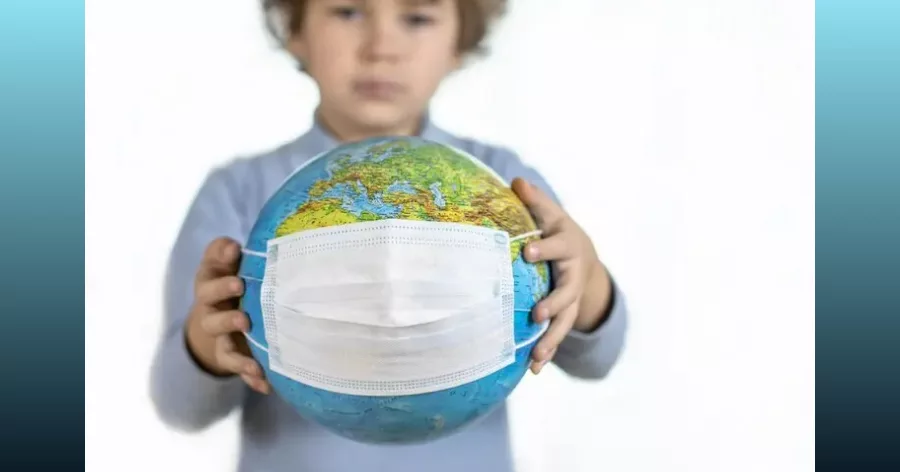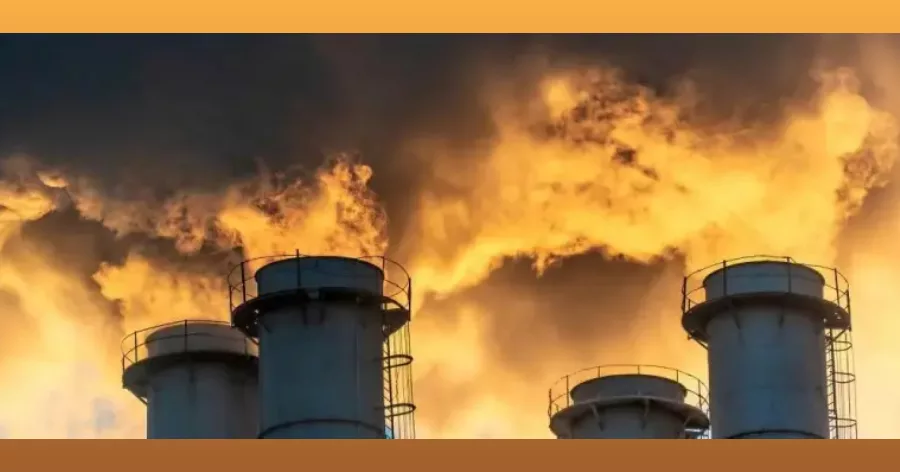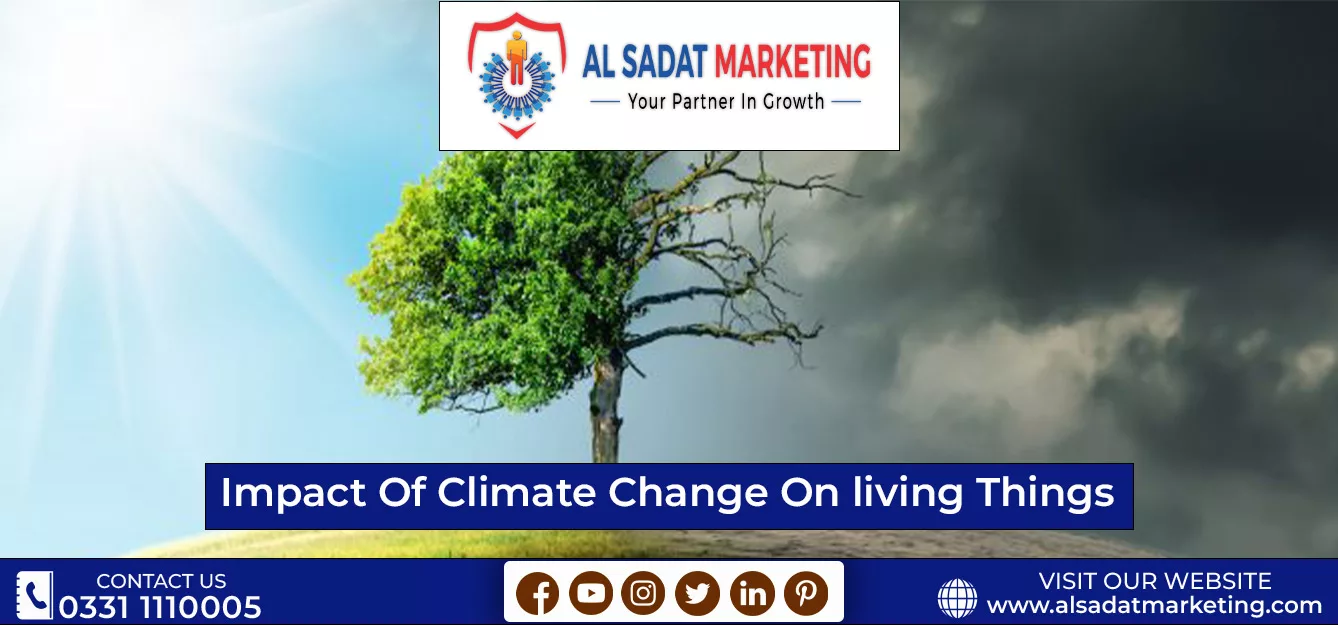Impact of Climate Change on Living Things 2023

Along with other natural and man-made health stresses, climate change has a variety of effects on human health and disease. New health threats will appear, and some current health threats will become more serious. Not everyone faces the same danger. Age, financial resources, and location are significant factors.
Emissions of greenhouse gases are increasing. Climate risks have an impact on human pathogenic diseases, which are ailments brought on by infectious pathogens.
Prior research has typically focused on how climate change affects particular categories of diseases, like bacteria or viruses, risks, like precipitation or floods, or transmission types, like food or water.
It has been impossible to estimate the full threat of climate change on pathogenic diseases since research to this point has typically concentrated on particular families of pathogens.
The impact of ten different climate dangers on various infectious diseases was recently examined by experts.
They discovered that 58% of the 375 infectious diseases that are known to impact humans worldwide have at some point been made worse by climatic hazards.
Climate Change Influenced Over 200 Diseases
The climate hazards that influence and trigger the spread of pathogenic diseases include:
- Global warming
- Drought
- Flooding
- Heatwaves
- Storms
- Sea level rise
- Wildfires
- Ozone layer depletion
The researchers considered both microbial and non-microbial, non-transmissible agents, such as plant and fungal allergens, which are aggravated by warming, floods, and storms and are developing into a significant health issue for non-communicable diseases, such as asthma, skin or respiratory allergies.

How Climate Change Aggravates or Triggers Diseases?
There are four major ways through which climate change interacts with pathogens and activates and triggers human infectious diseases:
- Environmental changes bring pathogens closer to humans, for instance, these changes allow for enhanced geographical and temporal suitability for vectors and pathogens.
- Another way is that climate hazards bring humans closer to infections. For example climate hazards prompting the displacement of populations that leads to increased contact with pathogens.
- The ability of viruses to adapt to harsher environments or the improvement of “environmental conditions that allow for extended periods of vector-pathogen interaction” are both enhanced by climatic hazards.
- Lastly, environmental dangers can impair our capacity to fight off viruses by increasing body stress and impairing our body’s resistance to infection.
Physical, biological, and ecological system disruptions, both locally and globally, can have an impact on public health. Increased respiratory and cardiovascular disease, injuries and early deaths from extreme weather events, changes in the prevalence and geographic distribution of food- and water-borne illnesses and other infectious diseases, and threats to mental health are some of the health effects of these disruptions.
Climate Change- A Biggest Threat to Human Health
Warming temperatures, altered precipitation patterns, an increase in the frequency or severity of some extreme weather events, and rising sea levels are all effects of climate change. These effects have an impact on the food we consume, the water we drink, the air we breathe, and the weather we encounter, endangering our health.

Temperature Related Threats
Extreme heat exposure can result in heat exhaustion, dehydration, cardiovascular, respiratory, and cerebral vascular disease. Populations in northern latitudes, where individuals are less equipped to deal with extreme heat, are more susceptible to being affected by it. Some demographics are more at risk than others; for instance, persons who work outside frequently, student athletes, and the homeless are more likely to be exposed to high heat.
Elderly people and homes with low incomes may not have access to air conditioning, which increases their exposure to excessive heat. Additionally, those with certain medical disorders, young children, pregnant women, elderly persons, and others who are less able to control their body temperature may be more susceptible to excessive heat.
Air Quality Impacts
Both indoors and outdoors, the air we breathe is impacted by climatic changes. Asthma attacks and other respiratory and cardiovascular health issues can result from poor air quality, which can be exacerbated by rising temperatures and changing weather patterns.
Wildfires produce smoke and other harmful air pollutants, and it is anticipated that their frequency and intensity will continue to rise as a result of climate change. Warmer temperatures and rising carbon dioxide levels also impact airborne allergies.

Impact of Ozone Layer Depletion
Scientists predict that as temperatures rise due to climate change, the number of days with unsafe concentrations of ground-level ozone, a dangerous air pollutant and component of smog, will rise.
Higher ground-level ozone exposure puts people at higher risk of early death or hospital admission for respiratory issues.
Ground-level ozone can irritate airways, impair lung function, and harm lung tissue. Asthma and other lung conditions may get worse as a result. Particularly at danger are children, older people, outdoor labourers, people who have asthma and other chronic lung conditions.
Climate change is predicted to increase the amount of ground-level ozone in already polluted places and the frequency of days with poor air quality since warm, stagnant air tends to accelerate the development of ozone.
If expected air quality measures remain the same, the increased ozone concentrations brought on by climate change may cause tens to thousands of ozone-related diseases and early deaths each year.
Results of Extreme Weather Conditions
The health of individuals is at risk both during and after some extreme weather events, such as storms, flooding, and heavy precipitation, which are becoming more frequent or severe. Young children, older individuals, persons with impairments or medical conditions, and the impoverished are the groups most at danger. Extreme circumstances can harm people’s health in a number of ways, including:
- Decreasing the availability of healthy food and water.
- Access to hospitals and pharmacies is hampered by damaged roads and bridges.
- Disrupting utilities, healthcare, and communication services.
- A rise in stomach and intestinal ailments, especially after power disruptions.
- Impacting mental health in ways that cause or exacerbate depression and post-traumatic stress disorder.
Water-Related Issues
If exposed to contaminated drinking or recreational water, people may get sick. Through rising temperatures, more frequent heavy rains and runoff, and the consequences of storms, climate change raises the risk of sickness. gastrointestinal disorders such diarrhoea, effects on the neurological and respiratory systems of the body, and damage to the liver and kidneys are only a few examples of health repercussions.
- Waterborne infections (bacteria, viruses, and parasites), toxins produced by toxic algal and cyanobacterial blooms in the water, and chemicals that end up in the water as a result of human activity can all be affected by climate changes.
- Waterborne bacteria and dangerous algal toxins will be present in the water or in seafood at different times of the year or in locations where they were not previously threatening as a result of changing water temperatures.

- Water bodies used for enjoyment (such lakes and beaches), and sources of drinking water will become more and more contaminated as a result of runoff and flooding brought on by increases in extreme precipitation, hurricane rainfall, and storm surge.
- Extreme weather conditions and storm surges can harm water infrastructure (such drinking water or wastewater treatment plants) or exceed its capacity, increasing the likelihood that people would be exposed to toxins.

Impact on Mental Health
Any modifications to a person’s physical condition or immediate environment may have a negative effect on their mental health. Particularly when a person loses loved ones or their house, being subjected to extreme weather events can have a negative impact on one’s mental health.
- Studies have shown that people who already have a mental disorder are three times more likely to die during heat waves, making them particularly susceptible to intense heat.
- Particularly at danger are those using drugs for mental illnesses that make it hard for them to control their body temperature.
- Stress reactions and mental health can be affected by even the perception of climate change as a threat (for instance, from reading or watching news stories about climate change).
Conclusion
According to the world’s largest public health organizations, climate change is a serious issue for public health. The National Institute of Environmental Health Sciences claims that climate change not only contributes to the spread of pests and viruses into new areas but also exacerbates many existing diseases and ailments.
Children, the elderly, the impoverished, and those with medical issues are the groups most at risk from the negative health effects of climate change.To stop the harmful consequences of climate change on human health, greenhouse gas emissions must be drastically reduced and strict actions must be taken.
You can also invest in other famous and most in demand housing societies, such as , Blue World City, Rudn Enclave, 7 Wonders City Peshawar, Taj Residencia, Kingdom Valley, New Metro City Gujar Khan, Forest Town Rawalpindi, University Town Rawalpindi, ICHS Town, Park View City Islamabad, Multi Gardens B17 Islamabad and Nova City Islamabad.
Al Sadat Marketing please contact 0331 1110005 or visit https://alsadatmarketing.com/
Few more real estate housing schemes which are trending now a days in Islamabad by including: Faisal Town Phase 2, Prism Town Gujar Khan, New City Paradise, Eighteen Islamabad, 7 Wonders City Islamabad, Capital Smart City, Silver City Islamabad, The Life Residencia, Faisal Town Islamabad, Islamabad Golf City, Islamabad Model Town and Marble Arch Enclave.
Al Sadat Marketing is an emerging Real Estate Agency headquartered in Islamabad, Pakistan. With over 10+ Years of experience, Al Sadat Marketing is providing its services and dealing all trending housing societies projects in different cities of Pakistan. Islamabad Projects, Rawalpindi Projects, Gujar Khan Projects, Burhan Projects, and Peshawar Projects etc.
Book Your Plot Now: +92 331 111 0005










